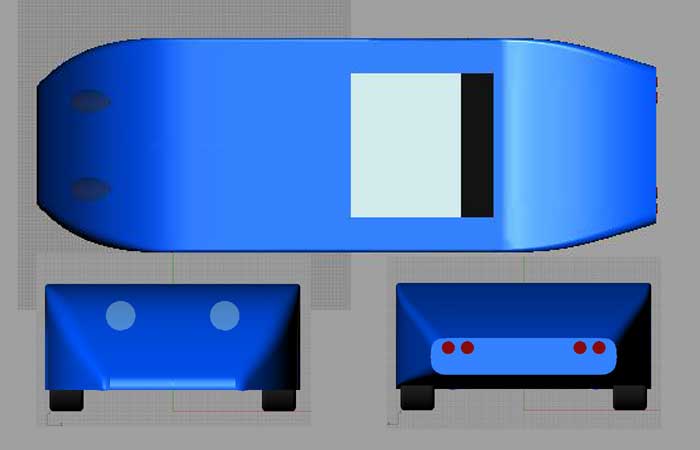Quote:
Originally Posted by Bicycle Bob

Ahh, I'd assumed from a single view that it was slab sided all the way. 3-views clear up a lot of uncertainty.
<snip>
As a first guess, I'd use the same shape you have from the center of the front wheels in side view, in plan view as well, to knock off the current corners. That should get you close enough.
<snip>
I recommend using Colin Chapman's "something for nothing" design, the venturi-bottom as on the Lotus 79 Classic Team Lotus You can start with a symmetrical wing design in Rhino, and squash the bottom against the ground so that the air goes across the top and bottom surfaces at the same speed. |
Done, done (see pix below), and thinking about it. I guess next on the keyboard is to round the nose more in side view to move the stagnation point up, and try to predict its influence on airflow.
I'm not fully convinced about the benefits of increasing the height of the stagnation point relative to the belly pan. The Schlör "Pillbug" (being discussed on Neil Blanchard's <Scion xA aero mods> topic) had a higher stagnation point than my blue body and it had a smooth flat belly (as does my car) but IIRC they spent time testing the lowest drag height and found that the higher they went, the less body drag they had...but the higher they went the more tire was exposed, so they stopped at the crossover point between the tire/body drag curves. I don't think increasing airspeed under the body reduces drag, though for track cars that have minimal ground clearance at the longitudinal edges of the belly, venturis provide more downforce for less drag than a wing would (dimensions as defined by the race organizers).

